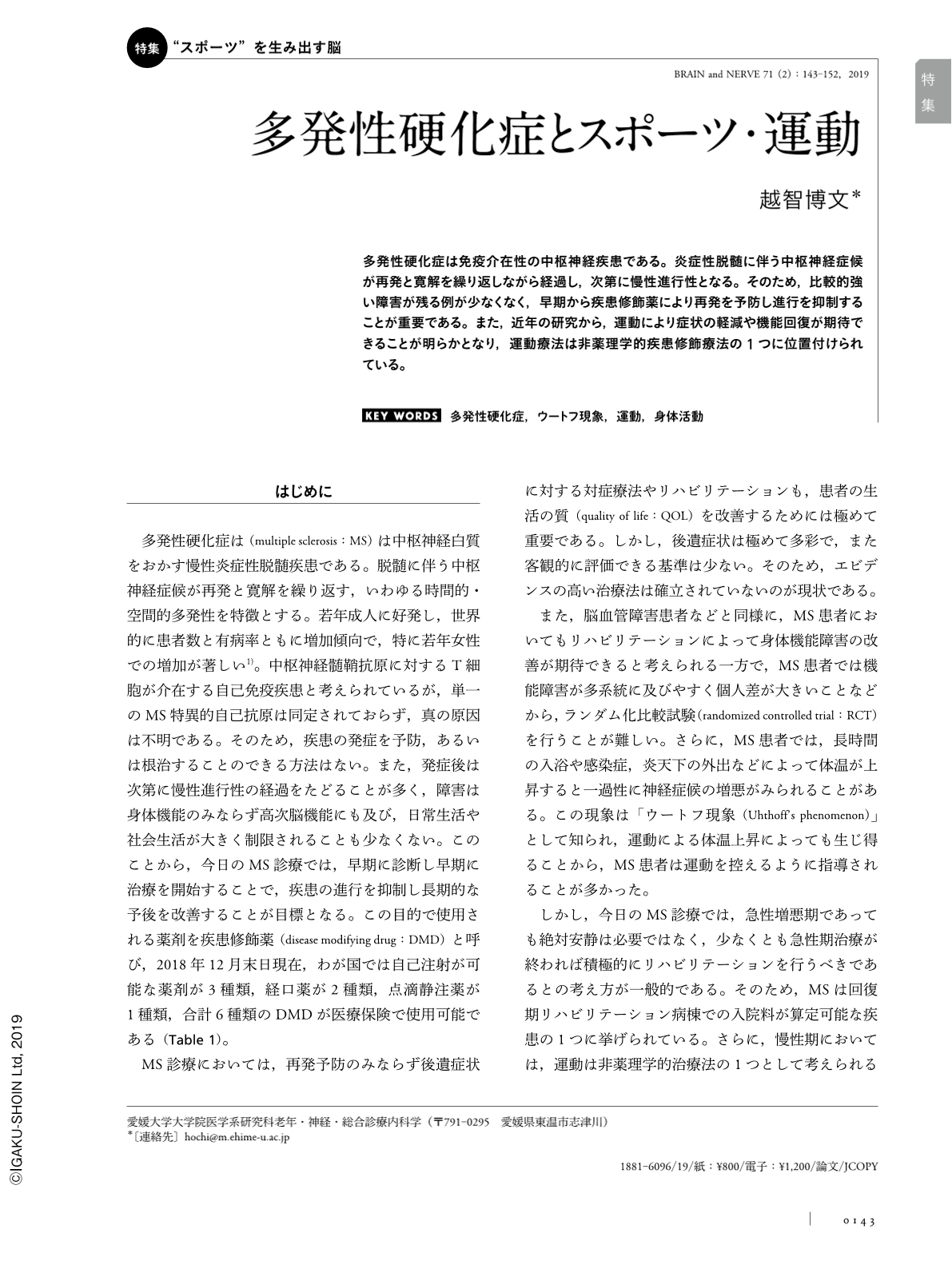Japanese
English
- 有料閲覧
- Abstract 文献概要
- 1ページ目 Look Inside
- 参考文献 Reference
多発性硬化症は免疫介在性の中枢神経疾患である。炎症性脱髄に伴う中枢神経症候が再発と寛解を繰り返しながら経過し,次第に慢性進行性となる。そのため,比較的強い障害が残る例が少なくなく,早期から疾患修飾薬により再発を予防し進行を抑制することが重要である。また,近年の研究から,運動により症状の軽減や機能回復が期待できることが明らかとなり,運動療法は非薬理学的疾患修飾療法の1つに位置付けられている。
Abstract
Multiple sclerosis (MS) is a complex immune-mediated disease of the central nervous system. It is characterized by inflammatory and neurodegenerative processes that result in progressive neurological disability. In the past two decades, there have been major therapeutic advances in the treatment of MS, and a substantial number of disease-modifying drugs (DMDs) have been used in clinical practice. The currently available DMDs are effective in controlling inflammatory activity, but not neurodegenerative processes. In such cases, non-pharmacological approaches such as exercise therapy may play an important role. Although patients with MS were traditionally advised not to participate in physical activity, there is growing evidence that exercise therapy has potential disease-modifying anti-inflammatory and neuroprotective effects in patients with MS. This article reviews previous studies on the general benefits of exercise therapy and provides an overview of the current knowledge regarding the theoretical background of exercise therapy in patients with MS.

Copyright © 2019, Igaku-Shoin Ltd. All rights reserved.


